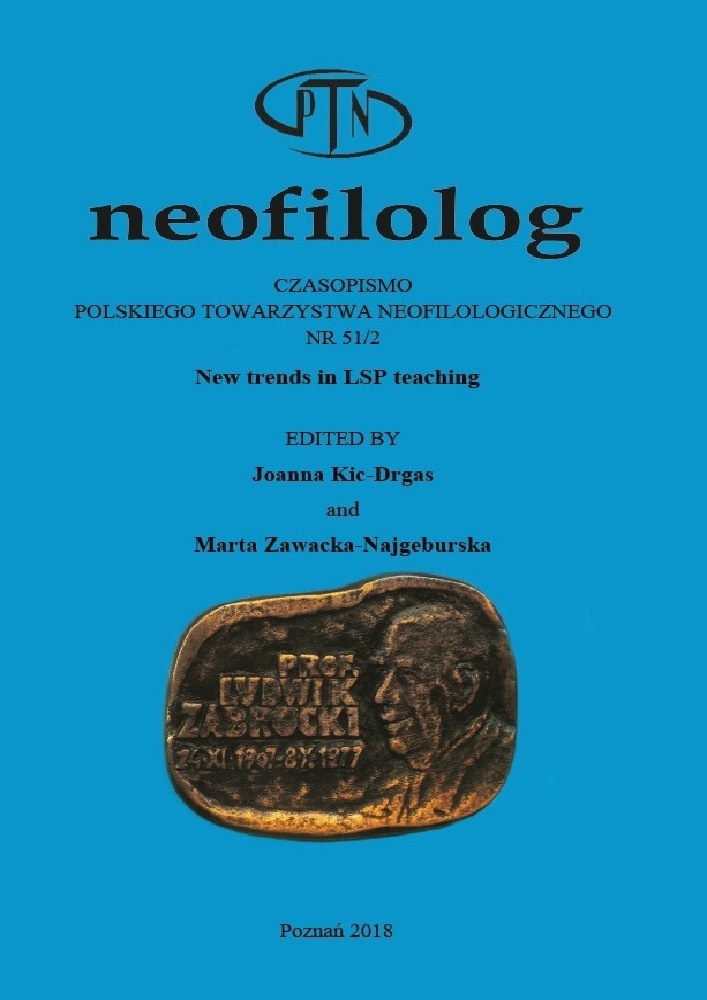Résumé
The use of independent and integrated speaking tasks represents a distinctive element of the TOEFL iBT speaking exam. Integrated tasks that involve synthesizing and summarizing information presented in reading and listening materials have the potential to generate new test preparation strategies. Language teachers, whether in schools or colleges, have started using Web 2.0. tools in order to prepare students for language exams. It is asserted that Web 2.0. tools support active and meaningful learning and help students to express themselves on a particular subject. This paper describes the use of Web 2.0. tools to simulate TOEFL iBT-style speaking exercises and improve the students’ test taking ability in speaking during a course for kindergarten teachers in Andychów. Web-based activities were also implemented to help students overcome their fear of speaking. Also discussed are the main problems encountered, both pedagogical and technical, and what was done to solve them. Student feedback from an end-of-the-semester survey and from qualitative interviews is shared. The survey study shows that the use of Web 2.0. tools was a key feature of exam preparation on this intensive course. It is agreed that speaking skills of students can be improved through careful implementation of Web 2.0. tools.
Références
Anderson, P. (2007), What is Web 2.0? Ideas, technologies and implications for education. Online: http://www.ictliteracy.info/rf.pdf/Web2.0_research.pdf [access date: 4.2018].
Bailey, K. (1999), Washback in language testing (TOEFL Monograph Series 15). Princeton, NJ: Educational Testing Service.
Bryant, T. (2007), Games as an ideal learning environment. NITLE Transformations. Online: http://www.academia.edu/164496/Games_as_an_Ideal_Learning_Environment [access date: 4.2018].
Edwards, S., Bone J. (2012), Integrating peer assisted learning and eLearning: using innovative pedagogies to support learning and teaching in higher education settings (in) “Australian Journal of Teacher Education”, No 37. Online: http://dx.doi.org/10.14221/ajte.2012v37n5.4 [access date: 4.2018].
Goswami U., Bryant P. (2007), Children’s cognitive development and learning (Primary Review Research Survey 2/1a), Cambridge: University of Cambridge, Faculty of Education.
Greenhow, C., Robelia, B., Hughes, J. E. (2009), Learning, teaching, and scholarship in a digital age (in) “Educational Researcher”, No 38(4), pp. 246–259. Online: http://dx.doi.org/10.3102/0013189X09336671 [access date: 4.2018].
Greenhow C. (2011), Youth, learning, and social media (in) “Journal of Educational Computing Research”, No 45(2), pp. 139–146.
Kennewell S., Tanner H., Jones S., Beauchamp G. (2008), Analysing the use of interactive technology to implement interactive learning (in) “Journal of Computer Assisted Learning”, No. 24(1), pp. 61–73.
Kuh G.D. (2009), What student affairs professionals need to know about student engagement (in) “Journal of College Student Development”, No 50, pp. 683–706.
McLoughlin C., Lee M. (2008), Future learning landscapes: Transforming pedagogy through social software (in) “Innovate: Journal of Online Education”, No 4(5).
McLoughlin C., Lee M. J. W. (2007), Listen and learn: A systematic review of the evidence that podcasting supports learning in higher education (in) Montgomerie C., Seale J. (eds.), Proceedings of World Conference on Educational Multimedia, Hypermedia and Telecommunications. Chesapeake, VA: AAC, pp. 1669–1677.
Merchant G. (2009), Web 2.0, new literacies, and the idea of learning through participation (in) “English Learning: Practice and Critique”, No 8(3), p. 107.
Prenksy M. (2001), Digital natives, digital immigrants (in) “On the Horizon”, No 9(5), pp. 1–6.
Riley R., Wyatt R. (2009), Achieve TOEFL iBT: Test-preparation. London: Marshall Cavendish Education.
Selwyn N. (2009), Faceworking: Exploring students' education‐related use of "Facebook" (in) “Learning, Media and Technology”, No 34 (2), pp. 157‐174.
Song, L (2014), Has Web 2.0 revitalized informal learning? The relationship between Web 2.0 and informal learning (in) “Journal of Computer Assisted Learning”, No 30(6), pp. 511–533. Online: doi:http://dx.doi.org/10.1111/jcal.12056 [access date: 4.2018].
Walker A., White G. (2013), Technology enhanced language learning. Connecting theory and practice. Oxford: Oxford University Press.
Wesch M. (2008), A vision of students today (and what teachers must do). Online: http://blogs.britannica.com/2008/10/a-vision-of-students-today-what-teachers-must-do [access date: 4.2018].
Zhao F., Kemp L.J. (2012), Integrating Web 2.0-based informal learning with workplace training (in) “Educational Media International”, No 49 (3), pp. 231–245.
Licence
© Neofilolog 2018

Ce travail est disponible sous licence Creative Commons Attribution - Pas de Modification 4.0 International.
Auteurs :
Les auteurs de textes acceptés pour publication dans la revue Neofilolog sont tenus de remplir, signer et renvoyer à l'adresse de la rédaction, un accord sur l'octroi d'une licence gratuite pour les œuvres, avec obligation d'accorder une sous-licence CC.
En vertu de cet accord, les auteurs des textes publiés dans la revue Neofilolog accordent à l'Université Adam Mickiewicz de Poznań une licence non exclusive et gratuite et permettent l'utilisation de la sous-licence Creative Commons Attribution-NoDerivatives 4.0 International (CC BY-ND 4.0).
Les auteurs se réservent le droit de disposer librement de l'œuvre.
Utilisateurs :
Les utilisateurs d'Internet intéressés ont le droit d'utiliser les œuvres publiées à partir de l'année 2017 sous réserve des conditions suivantes :
- reconnaissance de la qualité d'auteur - l'obligation de fournir des informations sur la qualité d'auteur, le titre, la source (liens vers l'œuvre originale, DOI) et la licence, ainsi que l'œuvre distribuée ;
- sans créer d'œuvres dérivées - l'œuvre doit être conservée dans sa forme originale, p. ex. les traductions ou les interprétations ne peuvent être distribuées sans le consentement de l'auteur.
Tous les textes publiés sont soumis au droit d'auteur.
Autres :
L'Université Adam Mickiewicz de Poznań se réserve le droit à la revue dans son ensemble (mise en page, forme graphique, titre, conception de la couverture, logo, etc.).
.

